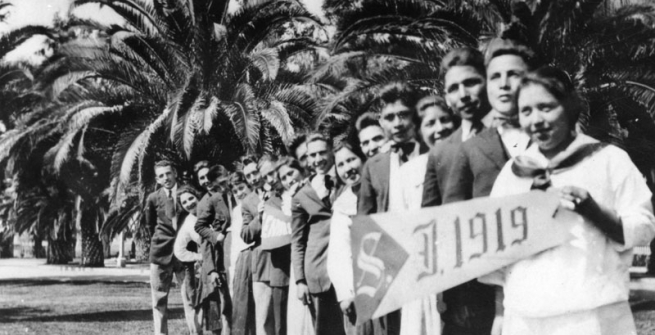When the Perris Indian School was established in 1892 by the United States government, it became the first non-reservation boarding school for Native American children in California. The objective of the school, along with others like it around the country, was to assimilate students into “civilized” society, which could then be rubbed off on adult family members living on reservations.
While the government sought to diminish the importance of Native American culture for its students, local hotel owner Frank Miller sought to capitalize on it when he campaigned to have the school moved to Riverside. Arguing that Perris did not have an adequate water supply for the school, Miller actually hoped his nearby Mission Inn would benefit from curious tourists who he predicted would journey to the area to interact with real-life Indians.
The school was relocated and in 1903 dedicated as the Sherman Institute, named after James S. Sherman, a member of Congress (and later Vice President) who assisted in the funding of the campus. Just as Miller hoped, the relocation of the school helped the tourist trade in Riverside boom, and the recently expanded Mission Inn thrived as Miller was able to utilize students as a source of cheap labor and entertainment.
The early focus of the school was vocational, and students as young as four and as old as twenty traveled from around the country to study basic subjects, with a later emphasis on areas such as carpentry, blacksmithing, home economics, and nursing. The curriculum shifted more towards college prep after the school was accredited by the Western Association of Schools and Colleges in 1971. At that time, it began serving grades 9-12 and became known as the Sherman Indian High School which continues to serve as a boarding school and is operated by the Bureau of Indian Education/Bureau of Indian Affairs and the United States Government Department of the Interior.
The Los Angeles Public Library Photo Collection contains over 250 images relating to the Sherman Institute which can be viewed here.
Want to learn more about the Sherman Institute? Empty beds: Indian student health at Sherman Institute, 1902-1922 and Education beyond the mesas: Hopi students at Sherman Institute, 1902-1929 are available for checkout at the Los Angeles Public Library.













